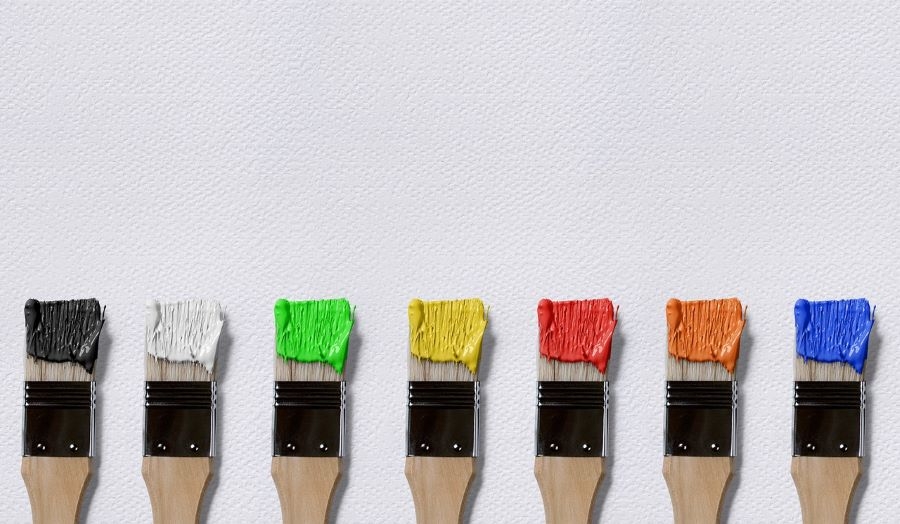Painting is one of the most cost-effective and transformative ways to spruce up your home. Whether you're looking to add a pop of colour to an interior room or revitalise the exterior, painting can significantly enhance the look and feel of your space. If you're new to house painting, fear not! This beginner's guide will provide you with valuable insights and tips for successfully tackling both interior and exterior painting projects.
In particular, the region of Lower Hutt, with its unique climate and architectural styles, offers a great canvas for those looking to venture into house painting. Tackling house painting in Lower Hutt or any other area requires a bit of preparation and know-how. This guide aims to demystify the process, providing step-by-step instructions and best practices for both interior and exterior painting. Whether you're aiming to enhance the curb appeal of your home or refresh its interior, keep in mind that a successful painting project not only depends on the colour you choose but also on your preparation, patience, and attention to detail.
Interior Painting Tips:
1. Choose the Right Paint:
Selecting the right paint is crucial for achieving a professional-looking finish. Consider factors such as durability, washability, sheen level, and VOC (volatile organic compounds) content when choosing paint for specific areas of your home. For example, high-traffic areas like hallways or kitchens may require semi-gloss or satin finish paints that are easy to clean.
2. Prepare Your Surfaces:
Proper surface preparation is essential for a flawless paint job. Start by cleaning walls with a mild detergent solution to remove dirt, dust, and grease stains. Patch any holes or imperfections with spackle and sand smooth once dry. Remember to prime your walls before painting for better adhesion and a more even finish.
3. Protect Your Furniture and Flooring:
Take precautions to protect your furniture, flooring, and fixtures from accidental paint splatters or spills during the painting process. Cover them with drop cloths or plastic sheeting, ensuring that every surface is adequately shielded.
4. Invest in Quality Tools:
Investing in high-quality tools will make your painting project much easier and yield better results. Essential tools include brushes (both synthetic and natural bristle) in various sizes for different applications, roller frames and sleeves for larger areas like walls, extension poles for reaching high surfaces, painter's tape for clean edges, and trays for paint application - just to name a few.
5. Use Proper Painting Techniques:
Start by cutting in the edges with a brush before using a roller to finish larger areas. Apply paint evenly and in thin coats to avoid drips, sags, and uneven coverage. Keep a wet edge while painting to maintain consistent colour and texture.
Exterior Painting Tips:
1. Check the Weather:
Before tackling an exterior painting project, check the weather forecast. Avoid painting on overly hot or humid days, as it can affect the drying process and compromise the quality of your finish. Aim for mild temperatures without rain or wind for optimal results.
2. Clean and Prep:
Like interior painting, proper preparation is essential for exterior projects, too. Thoroughly clean surfaces by power washing or scrubbing with detergent to remove dirt, mold, mildew, and loose paint chips. Repair any damaged areas by sanding them down and filling cracks or holes with appropriate materials.
3. Consider Primer:
While not always necessary, applying a coat of primer is recommended in certain situations – such as when dealing with bare wood or stained surfaces—with noticeable colour variations—to ensure a smooth and uniform painted surface.
4. Paint Safety Measures:
When working on elevated surfaces or using ladders for exterior painting jobs, prioritise safety! Use sturdy ladders with rubber feet and secure them properly before climbing up. Wear protective gear like goggles, gloves, long-sleeved shirts, pants, and hats to shield yourself from direct sun exposure and avoid potential injury.
5. The Right Timing:
Pay attention to the position of the sun when planning your exterior painting schedule. Paint one side of your house at a time when the sun is not shining directly on it – morning hours are often ideal since the afternoon sun can make the paint dry too quickly, leading to potential issues like visible brush strokes or uneven finish.
Conclusion:
House painting can be an enjoyable and rewarding DIY project that adds significant value and beauty to your home. By following these tips for both interior and exterior painting, even beginners can achieve professional-looking results. Remember to choose the right paint, prepare surfaces adequately, protect your belongings, use proper techniques, and prioritise safety at all times. Happy painting!





